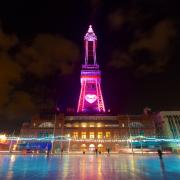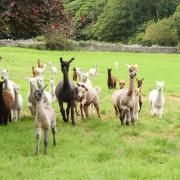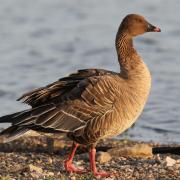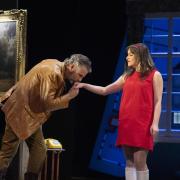It is early summer and the hedgerows flanking the footpath from the A59 east towards Bretherton and Bank Hall are decorated with honeysuckle and pink-white wild roses.
The path ahead has disappeared under a sea of mauve tipped Yorkshire fog grass that reaches waist high. No-one has been along here for days, maybe even weeks. A startled egret grazing in the next field launches into the air, a screwed up white handkerchief unwrapping itself before quickly assuming a new grace and purpose as it rises high above the cracked earth of an evaporated pond.
The fields and woods below the egret’s flight have a regal air. Maybe there’s been different planting. There’s certainly been less mowing and plenty of rain and it is already the best buttercup season in years. They are everywhere, flecking the rich green, uncut grasses with their gold while, across the field, a huge rhododendron is still in perfect deep purple bloom at the end of a copse.
A rippling breeze has made the woods surrounding the open fields and farms a swelling mass of silver by gently turning the leaves to reveal their matt undersides. These low-lying acres do not feel exposed but there must have been plenty of days when they attracted far stronger winds than today. The OS map for the area marks an old windmill within yards of the path and there’s another site marked just up the road. Both sites are barely 10 metres above sea level.

Close to where the wild roses wind their way through hedgerow under the crackle of overhead power lines, small olive-coloured balls forming on the blackthorn bushes suggest this year may better than last for sloes as well as the field flowers.
The cracked earth of the egret field is not as dry as it looks and our feet sink into the sodden floor as we leave the kingly colours behind and head towards the long dark avenue of unkempt limes leading to Bank Hall.
The clear but complex repertoire of thrush song rings through the trees on either side. Walking through the sound chamber, you leave the shrill song of one thrush behind and immediately enter the aural orbit of another, and another, all but obscuring the more modest volume of blackbirds chirping in the background as robins scutter across the tarmac of the lane.
Across open fields, pheasants dart at safe distances from where empty blue shotgun cartridges litter the floor. The sound of a family of young coots rises up from the reeds of the drainage channel lining the field edge. Above, there’s a different, less lyrical chatter, as a skylarks’ song is broken by long, insistent notes, like an angry ref blowing hard on his whistle.
On the lane towards Sollom and the bridge over the old River Douglas, there’s the distinctive ‘peep’ of an oystercatcher. We look around quickly as he lands close by in a field and starts happily grazing alone, prodding around amid the buttercups and grass with his long red beak.

On the other side of Sollom Lane, the first leaves of a potato crop are pushing through the soil of an open field as a dad and his two young sons cycle by. Looking north from the small stone bridge towards the A59 and St Mary’s Chapel, cow parsley lines the eastern banks of the river. On the far bank, the top of one of the thick reeds is misshapen and we pick out the obvious form of a reed bunting calmly surveying the river from his perch.
Further downstream, the river bank is more enclosed and a looming oak has become a more camouflaged station for a heron watching movements on the water below. The distinctive curves and angles of the bird’s body mimic the twists and turns of the limbs of the tree reaching out across the river.
Turning to look back to Sollom Lane, the stone bridge is perfectly framed by towering trees and the reed growth of late spring and early summer. Yellow flag irises are lining the banks. Sheep are wandering down to the river’s edge and the breeze is gently blowing shimmering patches of silver light on the surface of the water where the lily pads have yet to reach.
This old, unstraightened stretch of the River Douglas has become the setting for a landscape painting by Wheelwright or Constable as it twists its way beneath grey summer skies towards the Ribble and out to meet the sea.






























